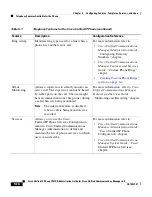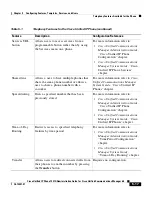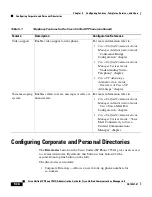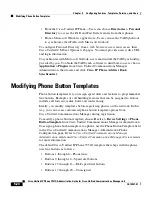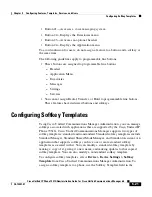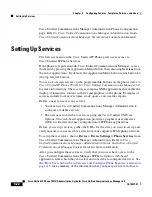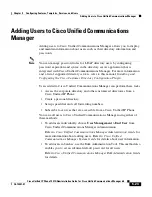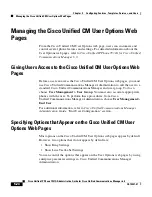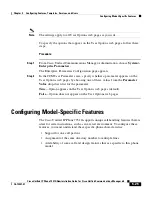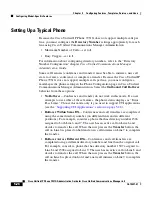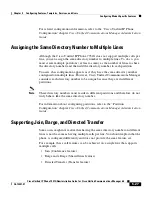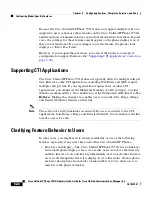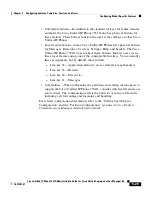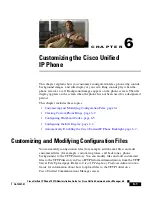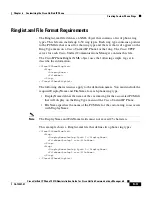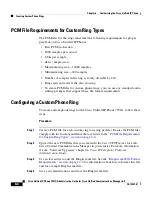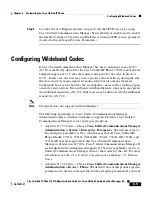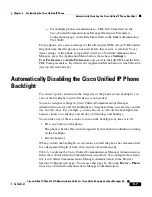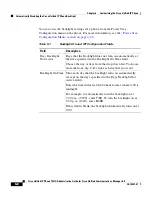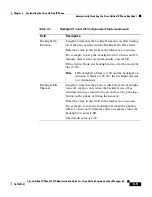
5-27
Cisco Unified IP Phone 7931G Administration Guide for Cisco Unified Communications Manager 6.0
OL-12457-01
Chapter 5 Configuring Features, Templates, Services, and Users
Configuring Model-Specific Features
For related configuration information, refer to the “Cisco Unified IP Phone
Configuration” chapter
Cisco Unified Communications Manager Administration
Guide
.
Assigning the Same Directory Number to Multiple Lines
Although the Cisco Unified IP Phone 7931G does not support multiple calls per
line, you can assign the same directory number to multiple lines. To do so, you
must create multiple partitions (at least as many as the number of lines to share
the directory number) and then add the directory number to each partition.
To users, this configuration appears as if they have the same directory number
configured on multiple lines. However, Cisco Unified Communications Manager
considers each directory number to be unique because they are in different
partitions.
Note
These directory numbers must reside in different partitions and therefore do not
truly behave like the same directory number.
For information about configuring partitions, refer to the “Partition
Configuration” chapter
Cisco Unified Communications Manager Administration
Guide
.
Supporting Join, Barge, and Directed Transfer
Some users might not realize that having the same directory number on different
lines is not the same as having multiple calls per line. You should explain that the
phone is configured differently and does not provide the same feature set.
For example, these call features can be achieved on a single line that supports
multiple calls:
•
Join (Conference feature)
•
Barge and cBarge (Shared lines feature)
•
Directed Transfer (Transfer feature)




